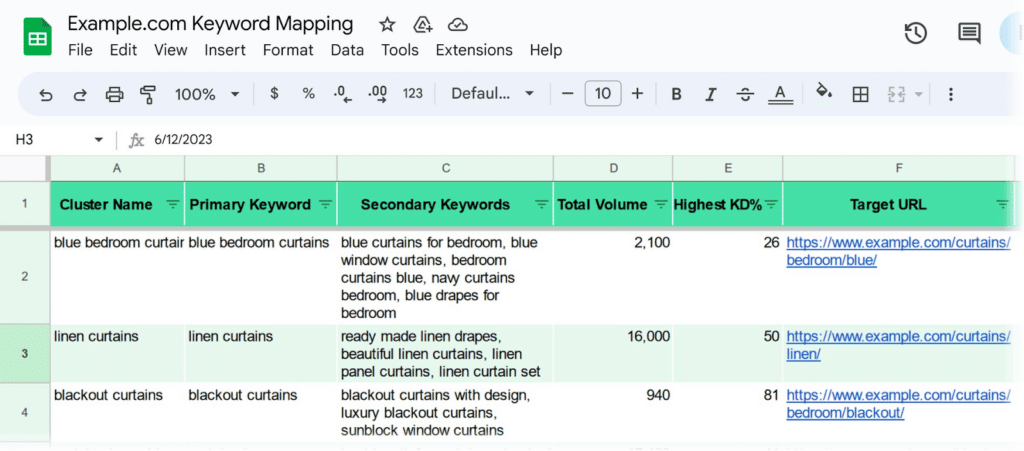
- SEO Strategy, Search Engine Optimisation, Keywords
Recent articles
our mailing list
Essential Keyword Research Strategies for SME

Many small and medium-sized enterprises (SMEs) mistakenly believe that effective SEO is all about cramming popular keywords into their content. This approach often leads to disappointing results and frustration. To truly succeed online, you need a strategic approach to keyword research. This comprehensive guide is here to debunk the myths and provide you with the essential keyword research tips and strategies tailored specifically for SMEs. By the end of this keyword research guide, you’ll have the tools and knowledge to enhance your SEO efforts and attract more targeted traffic to your website.

Understanding Keyword Research
Keyword research is the process of identifying and analysing the terms that people use in search engines to find information related to your business. It’s a critical component of SEO that helps you understand what your potential customers are searching for.
Why Keyword Research is Essential for SEO
Effective SEO and keyword research enables you to optimise your website content, making it more likely to appear in search engine results pages (SERPs). By targeting the right keywords, you can drive more organic traffic to your site, increase visibility, and ultimately boost conversions. For SMEs, this can be a game-changer in a competitive online landscape. To learn more about the significance of keyword research, you can visit Yoast’s guide on keyword research and HubSpot’s beginner’s guide.
Keyword Research Tips for Small Businesses
1. Identifying Your Niche and Target Audience
Start by clearly defining your niche and understanding who your target audience is. This will help you identify the keywords that are most relevant to your business and audience.
2. How to Determine Keywords Relevant to Your Business
Use keyword research tools to generate a list of potential keywords. Look for terms that are relevant to your products or services and have a good balance of search volume and competition. Don’t forget to consider long-tail keywords, which are longer and more specific phrases that can drive highly targeted traffic.
3. Long-tail Keywords and Their Importance
Long-tail keywords may have lower search volumes, but they often have higher conversion rates because they target users who are further along in the buying process. For example, ‘best organic coffee shops in Sydney’ is more likely to attract ready-to-buy customers than the generic term ‘coffee shops.’
4. Analysing Competitor Keywords
Look at the keywords your competitors are targeting. This can provide valuable insights into what’s working in your industry and help you identify gaps and opportunities. Tools like SEMrush and Ahrefs can help you with competitor analysis. Below we go into more detail about how you can perform a competitor keyword analysis.
Analysing Competitor Keywords
- Identify Your Competitors
- Use Competitor Analysis Tools
- Analyse Keyword Performance
- Search Volume: Higher search volume indicates more potential traffic but usually comes with higher competition.
- Keyword Difficulty: This metric shows how hard it is to rank for a particular keyword. Focus on finding a balance between high search volume and low difficulty.
- Traffic Potential: Some keywords might not have a high search volume but could still drive significant traffic due to their relevance and conversion potential.
- Examine Competitor Content
- Content Quality: Is their content well-written and informative? High-quality content often ranks better.
- Keyword Placement: How are they placing their keywords in their content? Look at title tags, meta descriptions, headings, and throughout the text.
- Content Length and Structure: Longer, well-structured content can perform better in search rankings. Note how they organise their content, use subheadings, and include multimedia elements.
- Look for Keyword Gaps
- Monitor Changes and Adapt
- Enter Competitor’s Domain: Start by entering your competitor’s domain into SEMrush.
- View Organic Research: Navigate to the ‘Organic Research’ section to see the top organic keywords that your competitor ranks for.
- Analyse Keyword Data: Look at the search volume, keyword difficulty, and the positions that your competitor holds for each keyword.
- Check Backlinks: Examine the backlinks your competitor has for their high-ranking pages. Quality backlinks can significantly impact keyword rankings.
- Identify Content Opportunities: Look at the content that is ranking well for your competitors and identify opportunities to create better or more comprehensive content.
Steps to Developing a Keyword Research Strategy
Keyword research and analysis is essential to creating an effective strategy. Here are some simple but effective ways to start your keyword strategy:
- Brainstorming and Initial List Creation: Start by brainstorming a list of keywords related to your business. Think about the terms your customers might use to find your products or services.
- Using Keyword Research Tools: Use tools like Google Keyword Planner, SEMrush, and Ahrefs to expand and refine your list. These tools can help you identify additional keywords and provide data on search volume and competition.
- Evaluating Keyword Difficulty and Search Volume: Assess the potential of each keyword by looking at its search volume and difficulty. Focus on keywords that have a good balance – high enough search volume to be worth targeting, but not so competitive that it’s unrealistic for your site to rank.
Creating a Keyword Map for Your Content
Organise your keywords into a keyword map. This involves assigning specific keywords to different pages on your website, ensuring that each page is optimised for a unique set of keywords. This helps avoid keyword cannibalisation, where multiple pages compete for the same keyword, diluting your SEO efforts.

Common Keyword Research Mistakes to Avoid
Overusing or Stuffing Keywords
Keyword stuffing is a major no-no. It not only makes your content difficult to read but can also lead to penalties from search engines. Focus on creating natural, engaging content that includes keywords organically.
Ignoring User Intent
Failing to consider user intent can result in high bounce rates and low engagement. Make sure your content meets the needs of your audience and aligns with the intent behind their search queries.
Failing to Update and Adapt Your Keyword Strategy
The digital landscape is constantly evolving, and so should your keyword strategy. Regularly review and update your keywords to stay relevant and competitive.
Implementing Keywords in Your SEO Strategy
Ensure that your on-page SEO is on point by following these best practices:
- Title Tags and Meta Descriptions: Include your target keywords in title tags and meta descriptions, but keep them natural and compelling.
- Headings: Use keywords in your headings (H1, H2, H3) to signal the main topics of your content.
- Keyword Placement and Density: Use keywords naturally throughout your content, including in the introduction, body, and conclusion. Avoid keyword stuffing.
Enhance Readability and Engagement
To enhance readability and engagement, break up your content with subheadings, bullet points, and images. Use short paragraphs and sentences to make the content easy to digest. Incorporate multimedia elements like videos, infographics, and images to make the content more engaging and informative.
Optimise for User Experience
Ensure your content is optimised for a seamless user experience. This includes:
- Fast Loading Times: Slow pages can frustrate users and negatively impact your SEO. Use tools like Google PageSpeed Insights to check and improve your page speed.
- Mobile-Friendliness: With more users accessing content on mobile devices, it’s essential to ensure your content is mobile-friendly. Use responsive design to make your site accessible across all devices.
- Internal Linking: Use internal links to guide users to other relevant content on your site, which can help keep them engaged longer and reduce bounce rates
Update and Refresh Content
Regularly update and refresh your content to keep it relevant and accurate. This can involve adding new information, updating statistics, or expanding on topics to provide more value to your readers. Tools like Google Search Console can help you identify pages that need updating based on performance metrics.
By focusing on these optimisation strategies, you can create content that not only ranks well in search engines but also provides real value to your audience, driving engagement and conversions.
To Wrap Up
Keyword research is a critical component of any successful SEO strategy, especially for SMEs. By understanding the nuances of keyword intelligence, developing a strategic approach, and implementing best practices, you can significantly enhance your online visibility and attract more targeted traffic to your website. Remember, effective keyword research is an ongoing process, so keep refining your strategy based on performance data and changing trends. For a broader understanding of SEO, check out our Comprehensive Guide to SEO for Small to Medium-Sized Businesses. Now, armed with these tips and strategies, you’re ready to take your SEO efforts to the next level.
If your SME needs help with your keyword research strategy, contact us. Sydney Digital Marketing is here to help you navigate the complexities of SEO and achieve your business goals.

Article by
Grace Pizarro
Content & Copywriting Specialist
Meet Grace, our in-house marketing and sales intern who has a love for everything communication. From blog posts and social media creation, to SEO research and competitor analysis, she enjoys leveraging AI and the latest technologies to elevate brand identity and help companies stand out from the crowd.








